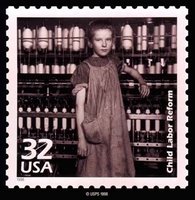 [new avatar]
[new avatar]| BrooklynDodger(s) comments: This is a tough post. The Dodger(s) think the most important finding of the last decade is the human health effects from exposure to poorly soluble low toxicity (PSLT) particles. This started with the observation that exposure to diesel particulate matter caused cancer in rats (but not mice.) This gave biological plausibility to repeated studies showing increase cancer among workers exposure to DPM, mostly truck drivers and train drivers. Then, additional bioassay studies showed carbon black - DPM with the PAC's washed off - also caused lung cancer in rats (but not mice). The titanium dioxide - the non-toxic control - cause cancer in rats (but not mice.) Air pollution studies directly observe increase mortality from respiratory and cardiac effects correlated with variation in particulate levels within EPA's current limits. Initially, no one could believe the cardiac effects. Then, laboratory studies showed that fine and ultrafine particles - PR'd as "nanoparticles" - could be shown to penetrate into circulation and show systemic effects in animals and people. A leading experimenter in the area was Gunter Oberdorster. Maybe the leading experimenter in non-cancer effects. Major funding from the Health Effects Institute, published in NIEHS Environmental Health Perspectives. IARC has put this who game in play this February. Carbon black, titanium dioxide and non asbestos talc are the PSLT trifecta. The Dodger(s) jaw(s) dropped to see Oberdorster show as an observer on behalf of the Industrial Minerals Association at this show in Lyons. The Dodger(s) now hold their breath as to the result. >>>>>>>>>>>>>>>>>>>>>>>>> Environ Health Perspect. 2005 Jul;113(7):823-39. |
Nanotoxicology: an emerging discipline evolving from studies of ultrafine particles.
Oberdorster G, Oberdorster E, Oberdorster J.
Department of Environmental Medicine, University of Rochester, Rochester, New York 14642, USA. Gunter_Oberdorster@urmc.rochester.edu
Although humans have been exposed to airborne nanosized particles (NSPs; <>>>>>>>>>>>>>>>>>>>>>>>>>>>>>>
http://monographs.iarc.fr/past&future/vol93-participants.pdf
IARC Monographs on the Evaluation of Carcinogenic Risks to Humans
VOLUME 93: CARBON BLACK, TITANIUM DIOXIDE AND NON-ASBESTIFORM TALC* Lyon, France: 7-14 February 2006
Observers
John Hoskins, Independent Consultant, on behalf of the Titanium Dioxide Panel of the American Chemistry Council (USA) & CEFIC Titanium Dioxide Manufacturers Association (Europe)
Noor Jehan, University of Peshawar, Pakistan Peter Morfeld, RAG Inc., on behalf of the International Carbon Black Association
Kenneth Mundt, ENVIRON Corporation, on behalf of the International Carbon Black Association
Joshua E. Muscat, Penn State Cancer Institute, on behalf of the Industrial Minerals Association-Europe (IMA-EU) & Industrial Minerals Association-North America (IMA-NA)
Günter Oberdörster, University of Rochester Medical Center, on behalf of the Industrial Minerals Association-Europe (IMA-EU) & Industrial Minerals Association-North America (IMA-NA)
David B. Warheit, DuPont Haskell Laboratory, on behalf of the Titanium Dioxide Panel of the American Chemistry Council (USA) & CEFIC Titanium Dioxide Manufacturers Association (Europe)

2 comments:
BrooklynDodger,
Dr. Oberdorster co-authored the article in EHP with two other Oberdorsters. Given the uncommon nature of this name, I assume they are related and this is a family affair. One worked for Bayer Crop Science. But the others declared no conflicts of interest in that article, which appeared last June. Are we to assume that Dr. Oberdorster's relationship with the International Minerals Assn. began subsequent to publication of this article, or do you have evidence that he had this relationship going back prior to publication of this article?
Merrill Goozner
Integrity in Science Project
Center for Science in the Public Interest
Be still our heart. BrooklynDodger(s) have maybe gotten one comment during the life of the blog.
The Dodger(s) lack any direct knowledge of funding or timing of funding for Dr. Oberdorster. Or, how this might create a conflict beyond the desire of any investigator to validate that investigator's work. Dr. Oberdorster has been funded extensively by the Health Effects Institute.
On the other hand, the work is first rate. Although the interpretation of results for impact on public health may raise issues.
For science guys, going to IARC is like some congressmen going to St. Andrews for golf. Except you sit in small meeting rooms for hours listening to recondite arguements, rather than chasing a ball around the fairway.
Post a Comment